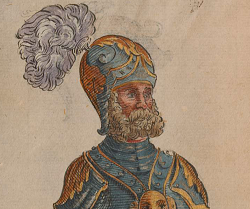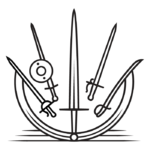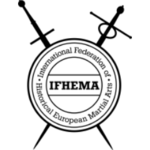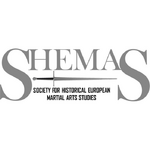|
|
You are not currently logged in. Are you accessing the unsecure (http) portal? Click here to switch to the secure portal. |
Main Page
Welcome to the Wiktenauer!The world's largest library of Historical European Martial Arts books and manuscripts |
Without books no one can be a good teacher nor even a good student of this art. ~ Master Fiore de'i Liberi, ca. 1405 |
Wiktenauer's mission is to collect all of the primary and secondary source literature that makes up the text of historical European martial arts research and to organize and present it in a scholarly but accessible format. The Wiktenauer project is began as a project of the Historical European Martial Arts Alliance and is now supported by researchers and practitioners from across the Western martial arts community. It is named for Johannes Liechtenauer, grand master of the oldest known longsword fencing style; his tradition was also the best-documented of the early Modern era, the subject of many dozens of manuscripts and books over a period of more than three centuries. Here are a few basic categories of pages that are being constructed:
- Master Pages host biographical information about each master, as well as the transcription and translation of his complete works. In cases of multiple copies of a master's work, the transcriptions are laid out side-by-side to facilitate the most accurate translation possible. To aid in interpretation, the writings will also be illustrated with images from the masters' work as available. A bibliography at the end of each page lists additional transcriptions, translations, and scans that are available in print. The exemplar for this category of pages is Fiore de'i Liberi. Ultimately, every master in all of the traditions of Western Martial Arts will have a dedicated page.
- Treatise Pages host all relevant data on a book or manuscript, including description, provenance, table of contents (with links to the appropriate master pages), gallery of page scans, and bibliography of additional print resources. The exemplar for manuscripts is the Goliath Fechtbuch, while the exemplar for printed books is Ergrundung Ritterlicher Kunst der Fechterey. Ultimately, every text in the corpus of Historical European Martial Arts literature will have a dedicated page.
- Technique Pages compile all of the relevant information from all of the relevant manuals on a particular technique, including transcriptions, translations, and images. There is also a section at the end of each page where groups may embed videos of their interpretations. The template for techniques is the Zornhaw. Ultimately, every technique mentioned in the manuals will have a dedicated page.
- Weapon Pages provide information about how a specific weapon form is described and used in the treatises, data on surviving artifacts, an overview of archaeological research pertinent to a given weapon, and a comprehensive index of the treatises and writers that discuss each weapon.
The wiki also features pages for HEMA groups, pages for HEMA events, general information pages, and almost other topic of interest to the HEMA community you can think of. If you'd like to pitch in, simply request an account and consult How can I help?
|
| ||||||||||||||||||||||||||||||||||||
Wiktenauer parent organizations
| Historical European Martial Arts (HEMA) Alliance
Wiktenauer's parent, a US educational non-profit which provides a range of programs and services for its members and affiliate schools and clubs, as well as serving the wider HEMA community. |
| International Federation of Historical European Martial Arts (IFHEMA)
An umbrella organization of national HEMA federations which facilitates international cooperation between members and protects the identity of HEMA as a combat sport on the international stage. |
| Society for Historical European Martial Arts Study (SHEMAS)
A learned society promoting and supporting research in Historical European Martial Arts Studies. It involves researchers and practitioners alike. (Currently innactive.) |
Historical European Martial Arts Federations
| Australia Western Martial Academies of Australia |
| Austria Österreichischer Fachverband für Historisches Fechten |
| Belgium Societas Belgarum Scientiae Nobilis |
| Brazil Associação Brasileira de Artes Marciais Históricas Européias |
| Czech Republic Česká asociace šermířů |
| France Fédération Française des Arts Martiaux Historiques Européens |
| Galicia (Spain) Asociación Galega de Esgrima Antiga |
| Germany Deutscher Dachverband Historischer Fechter |
| Greece Ελληνική Ομοσπονδία |
| Hungary Magyar Hosszúkardvívó Sportszövetség |
| Italy Vnione Arti Dimicatorie Italia |
| Netherlands H.E.M.A.-bond Nederland |
| Poland Polska Federacja Dawnych Europejksich Sztuk Walki |
| Portugal Federação Portuguesa de Esgrima Histórica |
| Slovenia Historical European Martial Arts Federation of Slovenia |
 |
Spain Asociación Española de Esgrima Antigua Federación Española de Esgrima Histórica |
| Sweden Svenska HEMA-förbundet |
| Switzerland Swiss Federation for Historical European Martial Arts |
| United Kingdom British Federation for Historical Swordplay |






















